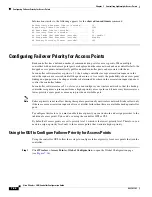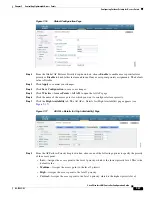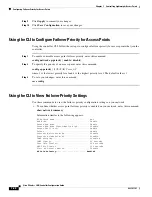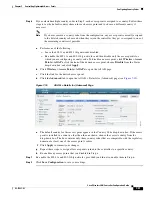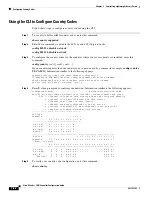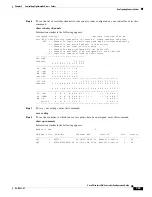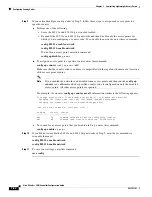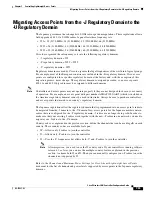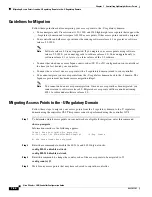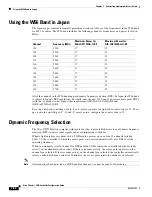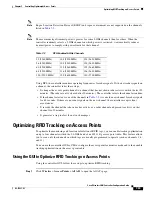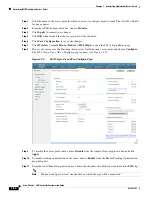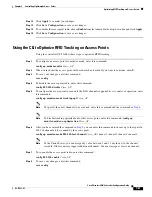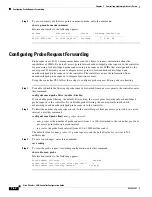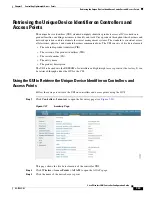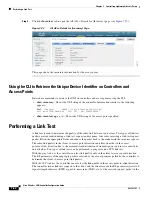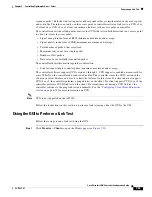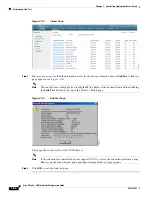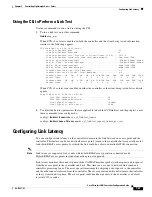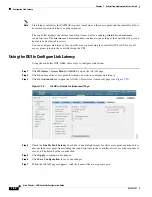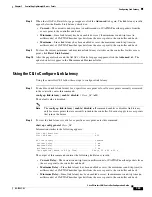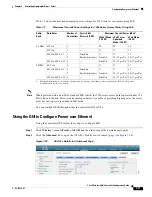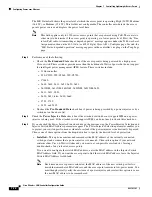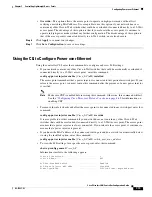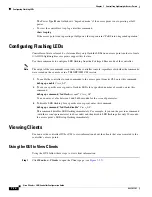
7-59
Cisco Wireless LAN Controller Configuration Guide
OL-17037-01
Chapter 7 Controlling Lightweight Access Points
Optimizing RFID Tracking on Access Points
Note
Rogue Location Detection Protocol (RLDP) and rogue containment are not supported on the channels
listed in
.
Note
The maximum legal transmit power is greater for some 5-GHz channels than for others. When the
controller randomly selects a 5-GHz channel on which power is restricted, it automatically reduces
transmit power to comply with power limits for that channel.
Using DFS, the controller monitors operating frequencies for radar signals. If it detects radar signals on
a channel, the controller takes these steps:
•
It changes the access point channel to a channel that has not shown radar activity within the last 30
minutes. (The radar event is cleared after 30 minutes.) The controller selects the channel at random.
•
If the channel selected is one of the channels in
,
it
scans the new channel for radar signals
for 60 seconds. If there are no radar signals on the new channel, the controller accepts client
associations.
•
It records the channel that showed radar activity as a radar channel and prevents activity on that
channel for 30 minutes.
•
It generates a trap to alert the network manager.
Optimizing RFID Tracking on Access Points
To optimize the monitoring and location calculation of RFID tags, you can enable tracking optimization
on up to four channels within the 2.4-GHz band of an 802.11b/g access point radio. This feature allows
you to scan only the channels on which tags are usually programmed to operate (such as channels 1, 6,
and 11).
You can use the controller GUI or CLI to configure the access point for monitor mode and to then enable
tracking optimization on the access point radio.
Using the GUI to Optimize RFID Tracking on Access Points
Using the controller GUI, follow these steps to optimize RFID tracking.
Step 1
Click
Wireless
>
Access Points
>
All APs
to open the All APs page.
Table 7-2
DFS-Enabled 5-GHz Channels
52 (5260 MHz)
104 (5520 MHz)
124 (5620 MHz)
56 (5280 MHz)
108 (5540 MHz)
128 (5640 MHz)
60 (5300 MHz)
112 (5560 MHz)
132 (5660 MHz)
64 (5320 MHz)
116 (5580 MHz)
136 (5680 MHz)
100 (5500 MHz)
120 (5600 MHz)
140 (5700 MHz)


